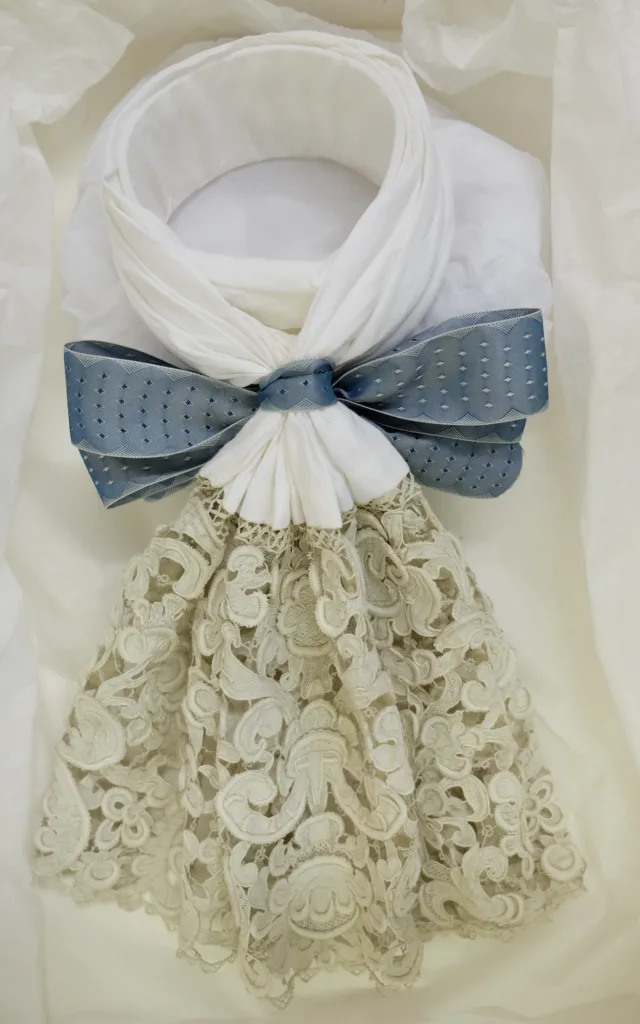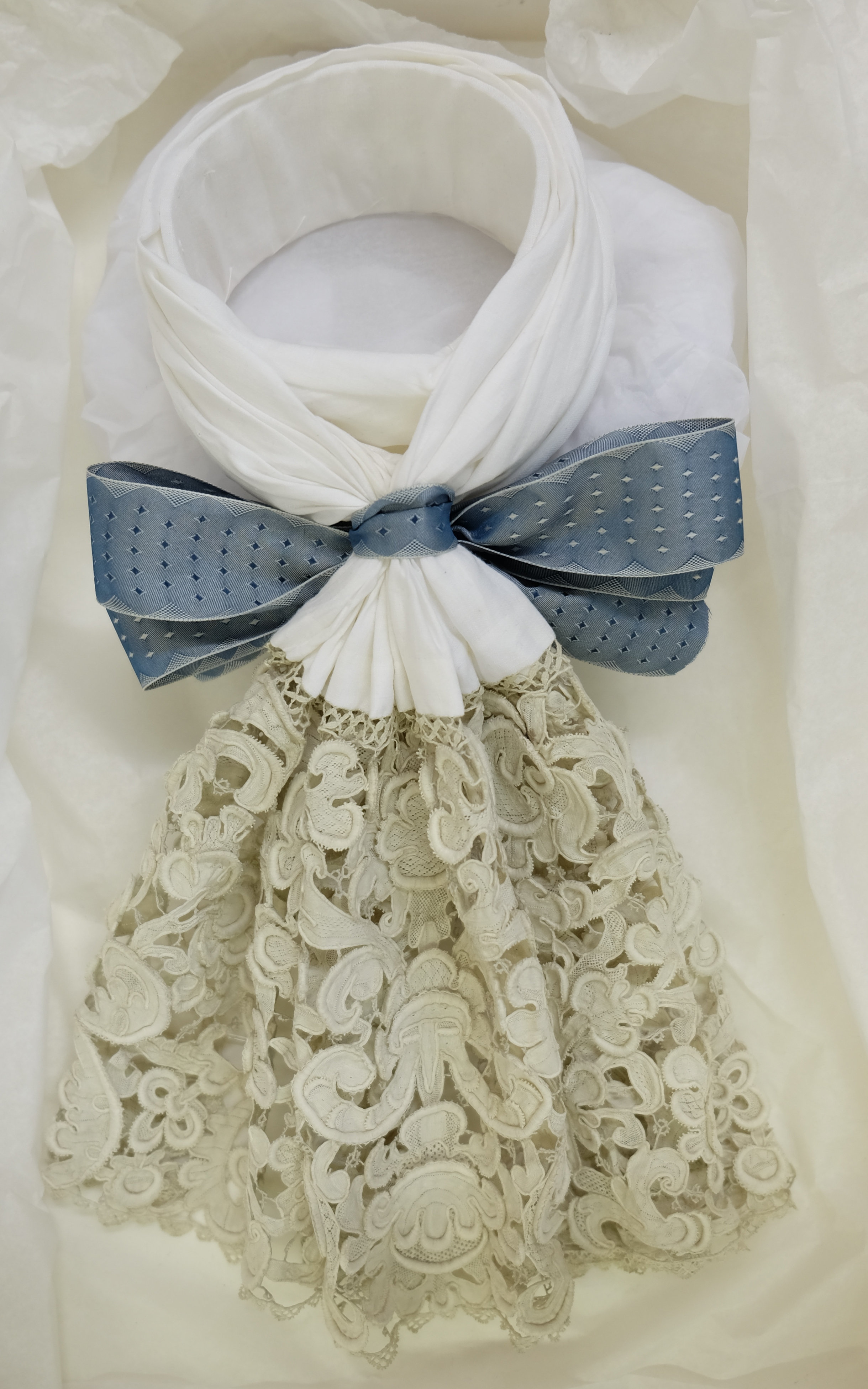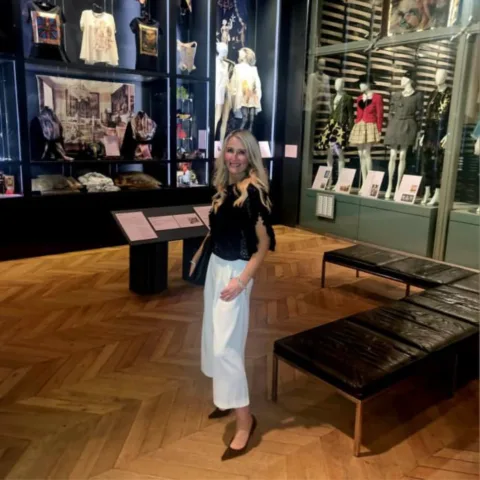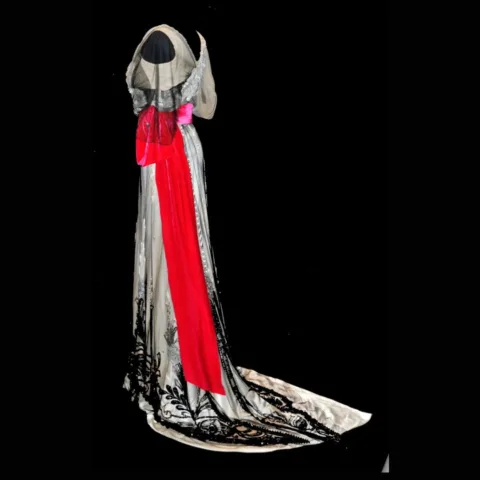The Bowes Museum Blog

A Fine & Fashionable Storage Mount


Lace Cravat on Custom-Made Storage Mount
There is something quite astonishing about seeing fine Venetian needlepoint lace at close quarters. Lace pre-cursors date back over two thousand years, however the technique flourished in Europe during the 1600s. Needlepoint was the natural evolution of openwork embroidery stitched onto a ground fabric. As needlework developed, becoming more elaborate and compact, the supporting ground became redundant and a new method of non-woven fabric production emerged.
Needlepoint lace is produced using a single thread, manipulated with (you guessed it) a needle. The design is traced onto a fine textile or paper, then the dominant pattern-dictating threads are couch-stitched in place to produce what is known as a ‘fil de trace’ (or outline). This is overworked in button-hole stitch before substantiating the design with ties, links or fillings. Having given the technique a go myself on a rather cruder level I can safely say that it is no mean feat!

Attempts at Lace Making
The Blackborne Lace Collection, donated to The Bowes Museum in 2006, is thought to be one of the finest in the world. A. Blackborne & Co. was established in 1852 in the West End of London, as a commissioner of contemporary lace and dealer of historic examples for re-use. The Museum donation covers five centuries of hand-made needle and bobbin lace, plus associated ephemera collected by the connoisseur and company founder Anthony Blackborne and later, his son Arthur who took charge of the firm.
My task over the last week has been to provide a long-term storage mount for a 17th century lace cravat from the Blackborne Collection [2007.1.1.124], partially reconstructed by the historical costumier Luca Costigliolo. Venetian Gros Point (of which this cravat is an exquisite example) was particularly revered across Europe during the mid-seventeenth century; a heavily worked three-dimensional needlelace, with floral designs often executed in double and triple relief. After brief sojourns in London, Edinburgh and, most recently, Switzerland, the loan details of which have been discussed in a previous blog, it has now been decided that this ‘Fine & Fashionable’ object needs a little rest.

Lace Cravat
The reconstructed portion of the cravat has been permanently stitched onto its Perspex mount and so, to allow full object support, I decided to craft a sloping board from a single sheet of Corex® (fluted plastic) scored along the folds and reinforced with a wedge of Ethafoam® (closed-cell polyethylene foam) in the middle. The board was then wrapped in a layer of polyester needle felt with a silk top cover pulled taught and stitched in place.

Making the Sloping Board
Cravat construction has left a number of sharp folds in the lace which are cause for concern as the fragile object becomes increasingly brittle and frail with time. Folds have therefore been softened with an assortment of individually sized soft ‘pillows’ of silk filled with polyester wadding and cones of Melinex® (polyester film). The neck has been filled with yet another shaped Ethafoam® support, held in place with magnets to prevent the object moving around the box while being moved.

Cravat on its new storage mount

Magnets stitched into board to hold mount in place
Finally I have custom-made a Correx® box to fit the mount and it is time for the cravat to be re-housed. This may seem like a lot of work for a single object but, as lace making did not flourish into the twentieth century, it is vital that historical examples are cherished to preserve the information they contain for future generations. Furthermore, this storage mount is completely inert and will support the object for many years to come. It can be used if the cravat goes on loan again and for object study, reducing the need to handle the piece and thereby aiding in its long term conservation.

Cravat in storage box
Jamie Robinson, ICON/HLF Textiles Conservation Intern
![]()







